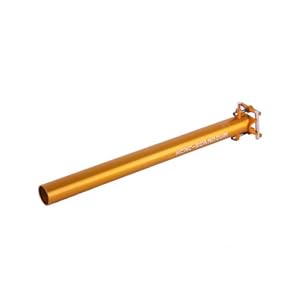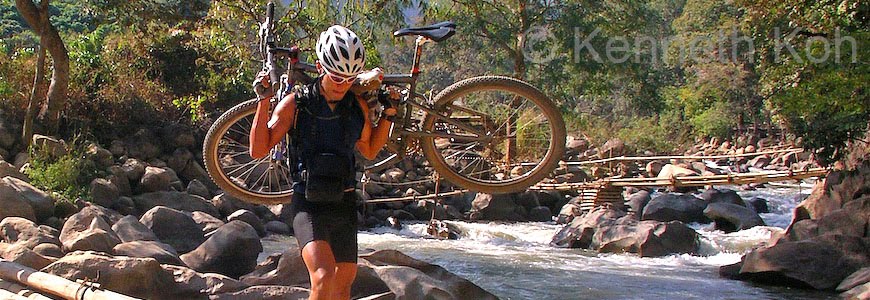I'm in the process of lightening up my Giant Anthem X. I'm hoping a lighter bike will save me some energy for the upcoming grueling Cape Epic Mountain Bike Race in South Africa. So how does one go about building a light bike?
300g Savings or more: Frame, Fork and Wheels
The best place to start is obviously in the 3 biggest, heaviest and costliest components. If you haven't bought a frame yet, it's best to start looking at your needs and then a frame that will fulfill those requirements. Carbon frames are where it's at for racing. For daily riding duties, a more durable aluminum or titanium frame may be more suitable. I chose to get a more durable aluminum frame and pay a slight weight penalty over a comparable carbon frame.
The Wheels are the next best place to spend money if you're trying to shave weight. The wheels rotate, and a lighter rotating weight saves more energy than a static weight elsewhere on the bike. Depending on where you are and what you can get, wheels come pretty light. I bought a Stan's ZTR Crest wheelset and replaced the stock Shimano XT wheelset, saving 360g of rotating weight in the process.
The fork is the third major piece of this puzzle. My Fox F120 RL is a heavy fork, and there are lighter options, but I like the way 120mm rides. Rockshox's SIDs and DT Swiss XRC are a couple of lighter forks you could look at.
200g Savings: Drivetrain, Brakes and Tires
Drivetrain, brakes and tires aren't really the place to get creative to save weight. Pros run the standard SRAM XX or Shimano XTR drivetrain and brakes. If your budget doesn't stretch that far, look at the SRAM X0 or Shimano XT equivalent. They may not be as light, but are often more durable.
While it is possible to go really light on tires, a lighter tire may be more puncture prone, and may be less grippy, thereby eroding your confidence and making your overall slower. For the Cape Epic, I'm thinking of using Continental Protection X-King 2.4 up front and a Continental Protection Race King 2.2
up front and a Continental Protection Race King 2.2 on the rear. Not really light, but low rolling resistance and good puncture protection.
on the rear. Not really light, but low rolling resistance and good puncture protection.
100g Savings: Seatpost, Handlebar, Stem and Pedals
The savings here are modest, but this is where you can get creative and still save about 100g for the handlebar and seatpost each, and 50g for the stem by replacing them with lighter aftermarket parts. Pedals like Crank Brothers Eggbeaters are about 100g lighter than the Shimano equivalent and their Ti version is even lighter. Taiwanese companies, like KCNC, are coming up with products like the KCNC Ti Pro Lite 8000 SeatPost , which at about 160g and a cost of about $100, is getting some rave reviews. KCNC also makes a nifty stem and some lightweight handlebars. Shop around and you can find even lighter carbon parts, but how light do you dare to go?
, which at about 160g and a cost of about $100, is getting some rave reviews. KCNC also makes a nifty stem and some lightweight handlebars. Shop around and you can find even lighter carbon parts, but how light do you dare to go?
Keep in mind that there is no free lunch. With lighter parts, comes a higher chance of equipment failure. Lighter equipment can be more flexible, more prone to damage when knocked around and more likely to break or fail. Assess your needs and the risks of going light.
10g Savings: The Small Bits
Swopping out some small bits like the seatpost clamp, top cap/stem bolt, jockey wheels, Ti rotor bolts, Ti QR skewers, etc can save between 10 - 30g each. Swop out a few of these, and the savings are over 100g.
2.5g Savings: The Bolts
Aluminum bolts for bottle cage bosses, brake levers and other non-load bearing places, Ti bolts for everywhere else. Savings are about 2.5g per steel bolt swopped for a Ti bolt, more for an aluminum bolt. It starts to get expensive here and its up to you to decide where to draw the line.
Remember, should you decide that your current steed is still too heavy, you can remove the Ti bolts and other lightweight bits and transfer them to your new bike.
300g Savings or more: Frame, Fork and Wheels
The best place to start is obviously in the 3 biggest, heaviest and costliest components. If you haven't bought a frame yet, it's best to start looking at your needs and then a frame that will fulfill those requirements. Carbon frames are where it's at for racing. For daily riding duties, a more durable aluminum or titanium frame may be more suitable. I chose to get a more durable aluminum frame and pay a slight weight penalty over a comparable carbon frame.
The Wheels are the next best place to spend money if you're trying to shave weight. The wheels rotate, and a lighter rotating weight saves more energy than a static weight elsewhere on the bike. Depending on where you are and what you can get, wheels come pretty light. I bought a Stan's ZTR Crest wheelset and replaced the stock Shimano XT wheelset, saving 360g of rotating weight in the process.
The fork is the third major piece of this puzzle. My Fox F120 RL is a heavy fork, and there are lighter options, but I like the way 120mm rides. Rockshox's SIDs and DT Swiss XRC are a couple of lighter forks you could look at.
200g Savings: Drivetrain, Brakes and Tires
Drivetrain, brakes and tires aren't really the place to get creative to save weight. Pros run the standard SRAM XX or Shimano XTR drivetrain and brakes. If your budget doesn't stretch that far, look at the SRAM X0 or Shimano XT equivalent. They may not be as light, but are often more durable.
While it is possible to go really light on tires, a lighter tire may be more puncture prone, and may be less grippy, thereby eroding your confidence and making your overall slower. For the Cape Epic, I'm thinking of using Continental Protection X-King 2.4
 |
| KCNC Ti Pro Lite Seatpost |
The savings here are modest, but this is where you can get creative and still save about 100g for the handlebar and seatpost each, and 50g for the stem by replacing them with lighter aftermarket parts. Pedals like Crank Brothers Eggbeaters are about 100g lighter than the Shimano equivalent and their Ti version is even lighter. Taiwanese companies, like KCNC, are coming up with products like the KCNC Ti Pro Lite 8000 SeatPost
Keep in mind that there is no free lunch. With lighter parts, comes a higher chance of equipment failure. Lighter equipment can be more flexible, more prone to damage when knocked around and more likely to break or fail. Assess your needs and the risks of going light.
 |
| Mt. Zoom Top Cap/Stem Bolt Combo. 4.7g. |
Swopping out some small bits like the seatpost clamp, top cap/stem bolt, jockey wheels, Ti rotor bolts, Ti QR skewers, etc can save between 10 - 30g each. Swop out a few of these, and the savings are over 100g.
2.5g Savings: The Bolts
Aluminum bolts for bottle cage bosses, brake levers and other non-load bearing places, Ti bolts for everywhere else. Savings are about 2.5g per steel bolt swopped for a Ti bolt, more for an aluminum bolt. It starts to get expensive here and its up to you to decide where to draw the line.
Remember, should you decide that your current steed is still too heavy, you can remove the Ti bolts and other lightweight bits and transfer them to your new bike.

2 comments:
I rode the Cape Epic in 2010, and all I can say is: don't sacrifice strength for a small weight saving. I have literally seen any possible bike part break on other people's bikes during the race: frames, forks, wheels, etc. My 12.5 kg bike with proven, bullet-proof components, survived everything though. The Cape Epic crosses some seriously rough terrain! Also, go tubeless and put twice as much sealant in as you normally would, lots of thorns there.
Good luck with the race!
Thanks Niels,
A very good point, and one that I'm constantly mulling over.
Thanks for the tip, and congratulations on finishing the Cape Epic!
Ken
Post a Comment